#Game Design Workflow
Explore tagged Tumblr posts
Text
From Concept to Creation: The Game Development Process Explained
Indicates forecasts predict that gaming revenues will surpass $365 billion during 2025 thus current trends show an upward trajectory. You have probably played many favorite games yet have you ever thought about their journey from initial innovative concept to a complete immersive experience? The friendly play offers insight into the complex development process through which creative ideas become technological experiences achieved through comprehensive planning. This article will explore how developers work through the game development process to create entirely new games.
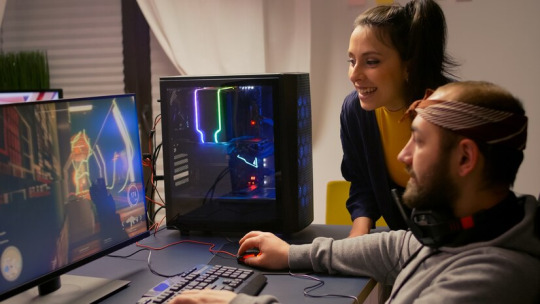
Ideation and Concept Development
Every prominent game develops its success from a powerful initial idea. During the ideation period developers conduct brainstorming activities. The search centers on developing concepts that have both high creative value alongside commercial potential. By examining market trends alongside their understanding of their targeted audience and current competitive gaming landscapes developers create custom gameplay features and plotlines. The success of games like Among Us emerged from mastering social deduction mechanics after this genre had little exposure during that period. During this stage, the foundational pillars of the game—such as storyline, characters, and genre—are established.
Game Design Document (GDD)
The development of the Game Design Document (GDD) begins after concept finalization because it functions as a detailed blueprint of the product. Every game feature from core mechanics to level map layout and gameplay targets along with visual design standards and audio components finds documentation in this master document. A game design workflow serves to keep team members focused on achieving a single unified vision while ensuring everybody stays in alignment.
Prototyping
During prototyping developers make fundamental builds to evaluate fundamental game mechanics while examining operational feasibility. The game development process makes use of Unity and Unreal Engine tools for developing swift and playable demonstration versions. Prototyping allows developers to detect potential problems early thus reducing time and financial costs.
Take Fortnite, for example. Multiple prototype versions were developed by the team for battle royale system optimization before Fortnite achieved its current worldwide status. Without proper prototyping, developers gain full knowledge about whether a game's fundamental concept entertains players during its bare essential design phase.
Production
Production reaches its peak moment during this particular stage of development. Character development within game projects consumes the most substantial time during development and could extend from several months into multiple years based on project complexity. Teams of programmers, artists, designers, and writers collaborate to build the game’s assets, including:
Coding: Developers write program code to implement game systems and AI systems as well as physical interaction logic
Art and Animation: Game developers create real magic by developing artistic characters and environments together with special visual effects that represent the game's artistic themes.
Sound Design: Game audio composers work to create music and sound effects that deepen players' immersion within virtual worlds.
One interesting fact? With more than 1000 developers and a $265 million budget Grand Theft Auto V became one of the largest and most costly video game creations ever made.
Quality Assurance (QA) and Testing
Every game production depends on thorough testing before its release. Quality Assurance teams operate continuously to find and fix bugs as well as program errors and system inconsistencies. The testing steps confirm a comfortable user pathway through the digital interface. Throughout gaming production testers analyze gameplay systems for equilibrium alongside interface operations to identify platform-related technical difficulties.
Launch and Post-Launch Support
The game moves to release status after developers finish all tests. Game developers market their products by using trailers together with social media platforms and influencer partnerships to create valuable online attention. After product launches developers deploy maintenance patches that deliver updates and make available downloadable content (DLC) to keep the player base active while also resolving ongoing problems.
Why Understanding the Game Development Process Matters
Game developers spend effort creating products beyond initial production because they aim to construct experiences that engage players effectively. The game development process reveals substantial insight about developer effort and creative work that produces beloved digital games whether they are huge AAA titles or small independent productions.
Final Thoughts
Throughout game development, we encounter diverse challenges ranging from initial concept development to final gameplay optimization which creates a rewarding but sophisticated process. The complete game development process requires both advanced original thinking and teamwork together with flexible reactions across all its development phases. Advancements through AR, VR, and AI push the video game industry forward definitively because they ensure an infinite field of groundbreaking innovations. Predicting and understanding the complete transformation from video game ideas to final products should enhance everyone's respect for the gaming industry's ingenuity and development strength.
0 notes
Text
For artists, storytellers, or just fans -
I don't design games, but I find some of this very useful as a creator of various other stripes.
youtube
In addition to some more technical matters, this talk goes into the thematic focus of the game, into Guerrilla Games' approach to creating the various people groups of Horizon Zero Dawn, and into principles of collaboratively creative workflow. There's also a lot of concept art, including npc costumes from different tribes.
This might especially be useful to fanfic writers who want new insights or ways of thinking about Horizon's themes and tribes!

the video is about an hour long
#horizon tribes#character design#horizon zero dawn#hzd#guerrilla games#game design conference#gdc#gdc 2018#aloy#Youtube#fanfiction#fanfic#fan fiction#creative workflow
23 notes
·
View notes
Text

#landscape#landscape design#2d platformer#2d art#game assets#game art#japanese#japanese garden#tiles#game making#original art#workflow
3 notes
·
View notes
Text

Im looking through the persona 5 artbook atm and this Prometheus design??? fucks MAJOR??? Like, this is banger as fuck and i needed to make an announcement o7
#persona 5#futaba sakura#thoughts of nothing#look i dont claim to know jack shit abt the workflow of character design for games but like.#TELL ME THIS DESIGN WOULDNT FUCK MAJOR???#Though i do kinda get maybe not wanting Futaba to be like. visible while navigating ig???#then again having her visible Would remind me of P3 and 4 Navis being visible#idk but like. this just screams prometheus to me more than the Orb does imo#not saying canon is bad but like. cmon.
6 notes
·
View notes
Text
#Logitech#MXMaster3S#Productivity#Ergonomics#Tech#Creativity#Workflow#Efficiency#Precision#Mouse#Gaming#Design#ProfessionalTools#SeamlessConnectivity
1 note
·
View note
Text
Game Asset Design: A Comprehensive Guide on Workflow
Let's design stunning assets that captivate players! Our latest blog provides you with a comprehensive guide to in-game asset design and creation.
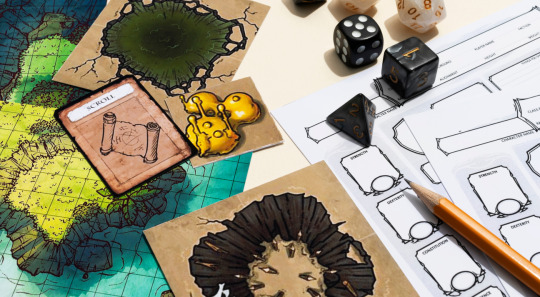
0 notes
Text
✧・゜: ✧how i use pinterest intentionally (not just endless scrolling) :・゜✧:・゜✧


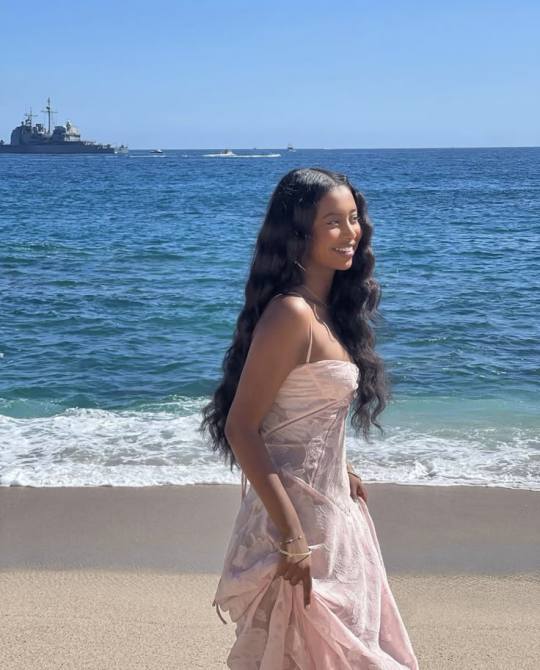
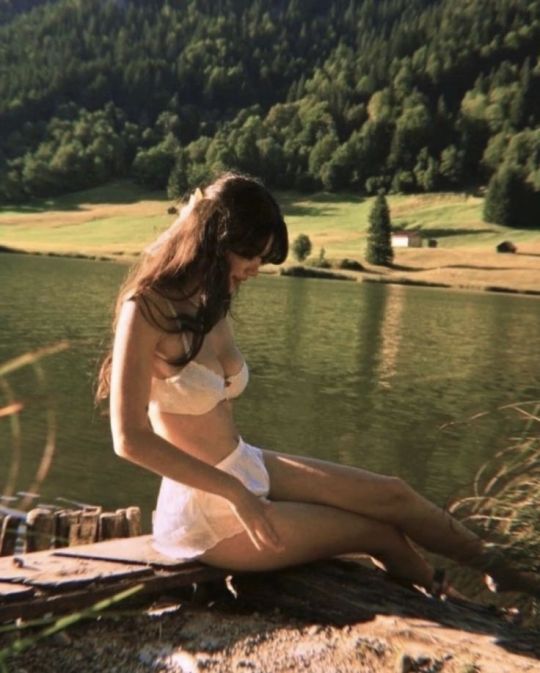

hey lovelies! ✨
confession time: i used to be a chronic pinterest scroller with absolutely nothing to show for my hours spent in the app. i'd save hundreds of pins to boards with vague names like "aesthetic" and "vibes," never to look at them again. sound familiar? but over the past year, i've completely transformed how i use pinterest from mindless consumption to an intentional tool that actually enhances my life. here's exactly how i made the shift!
⋆.ೃ࿔:・ the pinterest mindset shift ・:࿔ೃ.⋆
the game-changer for me was realizing that pinterest isn't just for collecting pretty pictures, it's a visual search engine and planning tool. now i approach it with purpose:
i ask myself "why am i opening this app right now?" before i even click the icon or enter it into the search bar
i set specific time limits for browsing (15-30 minutes max)
i focus on quality over quantity with my pins
i treat my boards as action plans, not just digital hoarding spaces
i regularly revisit and implement ideas from my boards
this shift transformed pinterest from a time-waster to one of my most valuable tools for planning, creativity, and personal growth.
⋆.ೃ࿔:・ my board organization system ・:࿔ೃ.⋆
the foundation of intentional pinterest use is thoughtful organization! here's my current system:
𝘮𝘢𝘴𝘵𝘦𝘳 𝘤𝘢𝘵𝘦𝘨𝘰𝘳𝘪𝘦𝘴: i group my boards into categories using board covers in the same color palette (lifestyle, home, fashion, etc.)
𝘢𝘤𝘵𝘪𝘰𝘯𝘢𝘣𝘭𝘦 𝘯𝘢𝘮𝘪𝘯𝘨: instead of vague names, i use specific titles like "meals for busy weeknights" or "bedroom refresh ideas 2025"
𝘴𝘦𝘤𝘵𝘪𝘰𝘯𝘴 𝘸𝘪𝘵𝘩𝘪𝘯 𝘣𝘰𝘢𝘳𝘥𝘴: i break down larger boards into sections (my "morning routine" board has sections for drinks, movement, journaling, etc.)
𝘱𝘳𝘪𝘷𝘢𝘵𝘦 𝘷𝘴. 𝘱𝘶𝘣𝘭𝘪𝘤: i keep boards private when they're in planning stages, then make them public once they're curated
𝘴𝘦𝘢𝘴𝘰𝘯𝘢𝘭 𝘢𝘳𝘤𝘩𝘪𝘷𝘪𝘯𝘨: i archive boards that aren't currently relevant (like christmas decor in july) to reduce visual clutter
⋆.ೃ࿔:・ my favorite intentional board types ・:࿔ೃ.⋆
here are the board categories that have added genuine value to my life:
𝘱𝘳𝘰𝘫𝘦𝘤𝘵-𝘴𝘱𝘦𝘤𝘪𝘧𝘪𝘤 𝘣𝘰𝘢𝘳𝘥𝘴: whenever i start a new project (room redecoration, event planning, etc.), i create a dedicated board with sections for different aspects
𝘴𝘦𝘢𝘴𝘰𝘯𝘢𝘭 𝘪𝘯𝘵𝘦𝘯𝘵𝘪𝘰𝘯 𝘣𝘰𝘢𝘳𝘥𝘴: i create a fresh board each season with sections for recipes, activities, outfits, and decor i want to incorporate
𝘤𝘢𝘱𝘴𝘶𝘭𝘦 𝘸𝘢𝘳𝘥𝘳𝘰𝘣𝘦 𝘱𝘭𝘢𝘯𝘯𝘪𝘯𝘨: i pin actual items i own alongside new pieces i'm considering to visualize combinations
𝘮𝘦𝘢𝘭 𝘱𝘭𝘢𝘯𝘯𝘪𝘯𝘨 𝘴𝘺𝘴𝘵𝘦𝘮: i maintain boards for different meal categories and actually reference them when making grocery lists
𝘨𝘪𝘧𝘵 𝘪𝘥𝘦𝘢𝘴: i have a board for each important person in my life where i pin potential gifts year-round
𝘨𝘰𝘢𝘭 𝘷𝘪𝘴𝘶𝘢𝘭𝘪𝘻𝘢𝘵𝘪𝘰𝘯: i create boards for specific goals with both inspiration and actionable steps
⋆.ೃ࿔:・ my pinterest workflow ・:࿔ೃ.⋆
this is my personal step-by-step process for intentional pinning:
𝘴𝘦𝘵 𝘢 𝘤𝘭𝘦𝘢𝘳 𝘱𝘶𝘳𝘱𝘰𝘴𝘦: i decide what specific question i'm trying to answer or problem i'm trying to solve
𝘤𝘳𝘦𝘢𝘵𝘦 𝘢 𝘴𝘦𝘢𝘳𝘤𝘩 𝘴𝘵𝘳𝘢𝘵𝘦𝘨𝘺: i use specific search terms rather than browsing the home feed (which is designed for endless scrolling)
𝘤𝘶𝘳𝘢𝘵𝘦 𝘤𝘢𝘳𝘦𝘧𝘶𝘭𝘭𝘺: i only save pins that: • provide clear value or inspiration • lead to actual content (not dead links) • represent ideas i genuinely might implement
𝘢𝘥𝘥 𝘯𝘰𝘵𝘦𝘴: i write specific notes on pins about why i saved them or how i plan to use the idea
𝘪𝘮𝘱𝘭𝘦𝘮𝘦𝘯𝘵𝘢𝘵𝘪𝘰𝘯 𝘱𝘭𝘢𝘯𝘯𝘪𝘯𝘨: after a pinning session, i schedule time to actually try one of the ideas
⋆.ೃ࿔:・ from virtual to reality ・:࿔ೃ.⋆
the most important part of intentional pinterest use is implementation! here's how i ensure my pins actually translate to real life:
𝘸𝘦𝘦𝘬𝘭𝘺 𝘱𝘪𝘯 𝘳𝘦𝘷𝘪𝘦𝘸: every sunday, i spend 10 minutes reviewing recent pins and selecting 1-3 to implement that week
𝘱𝘪𝘯-𝘵𝘰-𝘢𝘤𝘵𝘪𝘰𝘯 𝘵𝘳𝘢𝘤𝘬𝘦𝘳: i keep a simple journal noting which pins i've actually implemented
𝘱𝘩𝘰𝘵𝘰 𝘥𝘰𝘤𝘶𝘮𝘦𝘯𝘵𝘢𝘵𝘪𝘰𝘯: i take photos of my real-life versions of pinterest inspiration
𝘳𝘦𝘢𝘭𝘪𝘵𝘺 𝘤𝘩𝘦𝘤𝘬𝘴: i regularly ask "do i have the time/budget/skills for this?" before saving aspirational pins
𝘴𝘦𝘢𝘴𝘰𝘯𝘢𝘭 𝘤𝘭𝘦𝘢𝘯𝘰𝘶𝘵: i remove pins that no longer feel aligned with my taste or goals
⋆.ೃ࿔:・ advanced pinterest strategies ・:࿔ೃ.⋆
once you've mastered the basics, these strategies take intentional pinning to the next level! i hope you all enjoy them!:
𝘨𝘳𝘰𝘶𝘱 𝘣𝘰𝘢𝘳𝘥𝘴: i create collaborative boards with friends for shared projects or trips
𝘱𝘪𝘯 𝘮𝘢𝘱𝘱𝘪𝘯𝘨: for complex projects, i create flow charts showing how different pins connect to each other
𝘪𝘥𝘦𝘢 𝘦𝘷𝘰𝘭𝘶𝘵𝘪𝘰𝘯 𝘣𝘰𝘢𝘳𝘥𝘴: i document my own progress by pinning "before" and "after" images of my projects
𝘤𝘰𝘯𝘵𝘦𝘯𝘵 𝘤𝘢𝘭𝘦𝘯𝘥𝘢𝘳: i use pinterest to plan content themes for my blog and social media (i of course also use pinterest for images for my blog)
𝘭𝘦𝘢𝘳𝘯𝘪𝘯𝘨 𝘱𝘢𝘵𝘩𝘸𝘢𝘺𝘴: i create sequential boards that build skills in a particular area
⋆.ೃ࿔:・ final thoughts ・:࿔ೃ.⋆
pinterest is whatever you make of it, it can be a mindless scroll hole or one of the most powerful tools for intentional living and creativity. the difference lies entirely in how you approach it.
i still enjoy the occasional aimless browsing session (we all need that sometimes!), but transforming most of my pinterest time into purposeful searching and planning has genuinely enhanced my life. my spaces are more cohesve, my wardrobe more intentional, and my creative projects more focused, all because i stopped treating pinterest like social media and started using it like the powerful visual tool it truly is.
how do you use pinterest? are you a careful curator or a joyful browser? feel free to drop your thoughts in the notes!
xoxo, mindy 🤍

#pinterest tips#pinterest organization#pinterest aesthetic#girl tips#productivity hack#pinterest for planning#pinterest workflow#digital organization#pinterest boards#pinterest strategy#aesthetic organization#intentional living#pinterest inspo#productivity tips#pinterest guide#pinterest board ideas#pinterest hacks#aesthetic planning#pinterest tutorial#intention setting#coquette planning#aesthetic productivity#digital declutter#organization tips#pinterest board organization#girly productivity#that girl tips#pinterest sections#visual planning#digital planning
120 notes
·
View notes
Text
For the people who might not know:
In 2022 it was announced that Bokumono as a flagship IP would proceed as two development teams.
Three Rings Inc, responsible for the creation of assets and artistic direction (with Matsuyama as principal character designer), is the main vendor contracted to Marvelous to work on main series games.
Bullets Co. is the vendor for the secondary team, that handles the remakes. They are co-dev partners under Marvelous and work together to ensure the IP is holistically recognizable. (style templating)
The work is split between Nakano and Hoshina, as executive director and producer roles.
Marvelous is planning to continue remakes of older games while also creating new works, in a way not unfamiliar to Game Freak's new workflow.
#story of seasons#harvest moon#there are people disappointed by the remake being a thing but this was already in their company fiscal plans#a new game is coming as well
88 notes
·
View notes
Text
The Hundred Line character design team interview from Famitsu issue 1895
Hello, Mr. Komatsuzaki and Shimadrill. Tell us how you felt when you read the first project presentation for The Hundred Line.
Rui Komatsuzaki: The initial project proposal already had a pretty solid general idea of the plot, so I only needed to expand on that. The Hundred Line's key concept was 100 endings, so I could already predict that my usual amount of illustrations wouldn't cut it. The actual number went way above my already high expectations. I wasn't used to working this much (pained laughter).
Shimadrill: I joined Too Kyo Games because I was a fan of Kodaka's and Komatsuzaki's work, so I felt like I had to keep up no matter how tough it got. Kodaka and Komatsuzaki are particularly fast workers. I didn't even have time to complain without how much I needed to do.
What exactly was requested for the designs of the Special Defense Unit members?
Kazutaka Kodaka: I gave Komatsuzaki the story's script and a document listing characteristics and nicknames of each character (delinquent for Yakushiji, punk rock for Amemiya, and so on) and asked him to come up with the designs.
Komatsuzaki: The design workflow was the same it was in the previous games. Instead of nailing their characterization one-by-one, I started with a draft of the whole cast based only on the amount and general characteristics of them. I used that to fine-tune the collective balance of the cast, and only after that part was settled that I gave the characters individual attention.
Was the process smooth?
Komatsuzaki: Speaking of things being the same as usual, the first version of the mascot characters was never altered. SIREI got approved at the first try.
Kodaka: Back then, I still hadn't given SIREI's character much thought, so Komatsuzaki could go with whatever design he wanted. SIREI's quirks derived from the design rather than the other way around.
Was NIGOU just as easy?
Komatsuzaki: Yeah. I was told NIGOU could be just a palette swap of SIREI, but I wanted them to be a little different, resulting in the current design.
Any other important points?
Komatsuzaki: I really wanted SIREI and NIGOU to be transparent. After that, I exposed their brains and hearts.
Kodaka: I didn't know how to react when he drew a brain after I had already told him SIREI was a robot. I wasn't sure if it was okay for robots to have brains. But later I came to the conclusion that the best computer imaginable would be one capable of utilizing a live human brain. My final decision was that SIREI and NIGOU are equipped with advanced computers that only resemble human brains, but that's a lore tidbit that never gets said in-game.
Cool.
Komatsuzaki: Also, having read the story, I could imagine this game mascot would take some serious damage, so I thought it was better not to make them animal-themed like Monokuma was. I don't want to see an animal-like mascot being seriously harmed. So I tried to give him a design more tolerable to brutalize.
Changing the subject to the Special Defense Unit, who would you consider the most memorable student?
Komatsuzaki: Unlike my previous games, The Hundred Line has combat outfits, which are mostly uniform for every character. To make the characters easier to identify during combat, there was a greater need to give them diverse, distinct, and memorable body types and heads. This means their conceptualization had great emphasis on their heads and physiques. I'd say Amemiya is the most memorable character. She set the bar for how striking they should be. I tend to use muted colors a lot, but Amemiya's design was an attempt to use colors I normally don't. The cast was balanced with her at the center of the scale.
Speaking of characters, I noticed they have a lot of sprites, as usual. How many did you make per character?
Komatsuzaki: The plan was making about 20 per character, totaling around 300 sprites, but I was wrong in predicting the real number would be 3 digits. There are so many that I stopped counting along the way.
How many did you have counted by the time you gave up?
Komatsuzaki: The total of sprites about 1 year before the game was gold was 1368. I kept making more after that, but I can't give a general figure because I was too afraid to count them.
Drill: No estimates for the final number?
Kodaka: We have over 100 per character, with the biggest ones reaching 200, so… I guess over 2000 in total?
How did you get this many?
Komatsuzaki: Sprite production involves the following steps: 1. I draw drafts for the sprites based the expressions and scenes that pop up in my head while I'm reading the story. 2. I refine the drafts. 3. I put together the sprite list while examining which variations are essential and which are redundant. However, this time the story was too long and I could never be done reading all of it, and until I finish reading, the sprite list only keeps increasing. I had a lot more expressions than usual before the first selection.
Kodaka: We tried to lower the amount. But there's a good reason why the number spiralled out of control: in The Hundred Line, each writer did the screen composition for their own stories. One goes "Keep this one, I'll use it", another goes "Keep this one, I'll use it", and little by little we end up with less thing to cut off, and even more things to add (awkward laughs).
Komatsuzaki: I obviously didn't predict this bloat. Face portraits are far from the only thing I got the amount of digits wrong in THL. I never want to be in a game this overblown again…
Kodaka: But thanks to Komatsuzaki drawing full-body sprites, we could do things we couldn't in previous titles. In Danganronpa, the characters had fixed on-field portraits and only changed expressions when zoomed in for conversation. In The Hundred Line, their sprites can be placed with expressions that fit the situation right from the get-go, making this game feel more living and breathing than its predecessors.
How did the designs for the Class Weapons and Class Armors came to be?
Komatsuzaki: The initial plan was to get the Class Weapons designed by someone other than myself. I had to make The Hundred Line's concept art in a period where I was extremely busy with another game and didn't have much time to work on it. But, for reasons I cannot disclose, requesting the other person stopped being a viable possibility. In the end, I had to do everything myself. I chose the weapons for every student, but since that's very relevant for combat, I first asked Media Vision to give me a general idea of size and shape, then added the defining details based on that.
Kodaka: Amemiya's Class Weapon are kitchen knifes that float midair for no reason. That's something better conveyed by showing a mock-up than by describing verbally.
Some of the Class Weapons are very peculiar. Do they have a shared theme? If yes, what?
Komatsuzaki: The design idea was that they had to seem made of bone and blood, so many of the smaller details look fleshy.
Any favorite Class Weapon?
Komatsuzaki: The most costly ones to produce are the ones that occupy my mind the most. Specifically, Yakushiji's bike, Kawana's AC, and Ginzaki's robot. The robot in particular was hell for Media Vision. I'm truly sorry about that. Most weapons match their mock-ups in size, but the robot was the only one I had to make bigger than they wanted.
Why?
Komatsuzaki: A robot needs to be big enough to comfortably fit Ginzaki inside the cockpit (awkward laughs). Also, thanks to me inventing the whole gimmick of the robot transforming into a shield, Media Vision had loads of extra work for the transformation sequence. I'm very grateful to them for producing a functional transformation sequence despite how the concept art I gave them illustrating what part moves where was so full of errors.
Kodaka: We sorta went crazy with the amount of animations on the robot, but thanks to Media Vision, it looks awesome.
Next, I'd like to ask about Class Armor. What was the design process like?
Komatsuzaki: Like with Class Weapons, I remember producing them on my spare time from other work. First I produced Sumino's to be the base for the other suits, and I wanted them their outfits to look unkempt by default. I actually wanted them to run around in mantles, but since those are time-consuming to model in 3D, that idea was cut from the game. Class Armors are made from blood, so having mantles or not doesn't really matter… That said, the battle models were made by Media Vision's modeller and I had to be insistent to get him to make them the way I drew. I feel so sorry for the sheer amount of constraints he had to work through.
Kirifuji's suit really stands out.
Komatsuzaki: That was a high-effort design. Kirifuji's suit had to be different from everyone else's, for lore reasons.
Kodaka: I was okay with hers being just a palette swap of the others, but Komatsuzaki went with a design that much better reflects her lore.
Komatsuzaki: It's a great design that I came to regret once I had to make multiple sprites for it. It's not the easiest design to draw (pained laughs).
What exactly was requested for the monster designs with the School Invaders and their Commanders?
Kodaka: I told Drill to make the Invaders colorful and toy-like. The popness of the enemy designs contrasts against the overall seriousness of the story, making them more unsettling, in my opinion. It was also decided from the start that the enemies could take more vicious forms, so I believe starting colorful would add to the creepiness of the transformations.
Drill: This request from Kodaka was the basis of the Invader production, and I also took a page from Komatsuzaki's book, only finishing them individually after I had already figured out the balance of the whole group. I remember that, when lining up the full roster of Invaders, I focused on making their silhouettes resemble capsule toys.
Komatsuzaki: I remember you going out to check real figures.
Drill: I took a trip to Nakano Broadway to study soft vinyl kaiju figures.
They're so colorful that every battle had me wanting to eat them.
Kodaka: Did I ever say I wanted the Darumarrs to look like a mixed blob of jelly beans?
Drill: You did. Then I suggested that displaying them as flocks of 3 in one tile would highlight the mixed blob factor and give off the feeling of fighting against large numbers. The idea of placing multiple enemies in the same tile was inspired by Warhammer 4K, which I used to play a lot.
I can see that. Any other production secrets regarding the monsters?
Komatsuzaki: Their coloring was redone soooo many times.
Drill: Their original models were really well-made, but not as saturated as I wanted their colors to be. Changing the lighting wouldn't fix the saturation, so their coloring had to be adjusted by redrawing them. That's what gave them the vibrant candy colors you find so tasty.
Did Kodaka have specific requests for the Commanders design?
Kodaka: The fodder Invaders were colorful, so I asked for the Commanders to look monochrome and divine.
Drill: Those two were the only requests for the collective, but there were specific things he wanted for each individual Commander. For example, the prompt for the Squad 1 Commander was "I want him to look too strong to reasonably be the first boss".
Kodaka: I also told you to make him huge. The debate of "is making TRPG enemies big is a good thing?" is a can of worms I told Shimadrill to ignore and just make the first one you fight look big and strong (laughs).
He sure looked big and strong (laughs).
Drill: That's why I decided on the dragon theming for the Squad 1 Commander. I've seen some demo players reaction to sudden strong-looking boss appearing, so I'd say the design did exactly what Kodaka wanted it to.
The Commander also had a humanoid design. Who did this one?
Kodaka: Komatsuzaki.
Komatsuzaki: We initially wanted Shimadrill, the monster design expert, to do them, but he didn't have the time for it when he was simultaneously working on another game, so I did all of it on my own. The humanoid Commanders also had a major share of restrictions coming from lore and production cost reasons, but with enough attempts, I feel like I managed to make them reasonably distinct from one another, within the limitations. It's easy to tell from how they all have different masks.
Kodaka: When checking the pictures for approval, I thought the way the mask design resembled Skull Knight was so cool. We were almost behind the schedule at the time we assigned the humanoid designs to Komatsuzaki, and there are many of them, so I was expecting simpler designs. Him making their design with this much care and detail in so little time was a pleasant surprise.
Is it true that Shimadrill designed the school backgrounds?
Drill: Correct. I was in charge of the school's exterior and hallways, and drew them in great detail.
Kodaka: Komatsuzaki and I have something of a "When in need, ask Drill" mentality. He is often helping out with the most random situations. For example, we thought the design for the alarm speaker that rings when Invaders attack was lame. Worried that this wouldn't convey tension to the player, we called Drill to make a more striking speaker design.
Drill: If we're counting that, I also redesigned the weird wooden boxes (awkward laughs). That request came quite close to the deadline, and it was something I wouldn't think needed adjustments, but Kodaka is a director particular about the details.
Komatsuzaki: There were so many things we got Drill to redesign because they looked too normal.
What was the hardest part of the background designs?
Kodaka: The first thing to come to mind is the school's exterior. It's always visible during combat, so I asked Drill to draw something memorable. He came up with multiple variations, including more hawkish school illustrations. The Last Defense Academy lore back then wasn't the same it is now, and one of the ideas of having a cannon like the one from Battleship Yamato frequently shooting at the field.
Drill: We actually took reference sheets from Battleship Yamato.
I'd expected you take reference sheets from real schools. Were you avoiding that on purpose?
Drill: We were. For some reason, I had to study exclusively warships, tanks, and spaceships to draw a school (laughs). The Last Defense Academy is important enough to the game to be part of the title, and as someone with the mission to support Kodaka and Uchikoshi at Too Kyo Games, I couldn't afford to put out something uncreative. My job is to figure out what would be fun, and create the showy designs Kodaka and Uchikoshi love so much. I always try my best to be ahead of the game when it comes to their expectations.
I was impressed by how each floor look so different from another. Is that essential to the Shimadrill style?
Drill: No, it's essential to the Kodaka style. He requested every floor to be different, so the hallways wouldn't feel samey to the player.
Kodaka: I got him to come up with multiple hallway variations and chose which of them to use and what color they'd have. There are a lot of objects placed on the hallways, and all of them reflect elements of the Tokyo Residential Complex's culture and history that won't get fully elaborated in-game. Drill came up with lore reasons for the presence of each object in the academy, so you can theorize on how their inclusion makes sense.
There's some really… unique furniture in the background. Special mention to the cooking machine being a Thousand-Armed Kannon statue.
Drill: The robot Kannon was my idea. Kodaka asked me to come up with an automatic cooking machine, so I sought inspiration in pre-90s sci-fi art and Expo videos.
Kodaka: AI could never come up with a Thousand-Armed Kannon cooking machine (laughs).
Never (laughs). Next, tell us about the event CGs.
Kodaka: There are over 600 CG illustrations in The Hundred Line. Most of them are drawn by third-party workers, but Drill and Komatsuzaki finalize the art. They have a base standard of quality, but we do go harder on the more plot-significant ones.
Komatsuzaki: That's right, about 2 months before the game was gold, we were still working on improving the important ones.
Drill: I remember that.
Kodaka: Wasn't there a few that Drill made from scratch because there were too many for the third-party workers to keep up with the production pace?
Drill: I was called "just for a little finishing touches" and when I looked at it, I had to do even the lineart… Normal projects demand a lot less work than that when the game is just two months away from going gold (pained laughs).
I see you were in hell for as long as it could keep you there…
Kodaka: Checking if no CG illustration was contradicting the story was so much work. The most common mistakes were having the students dressed normal in scenes they were supposed to have their Class Armor, and randomly including students that would be absent at that point in time… This kind of verification is usually easy because it's done by the writer who knows everything about the story, but with the size of THL's story, the workload here had to be split between multiple people, plus my part was too big for me to remember all of it. In the end, I had to reread the entire story to see if any of the art had a mistake in it. That took forever.
Komatsuzaki: The Hundred Line is far from our only game conceived to be excessive in scope, but it is a league above the rest. We couldn't have completed it without help from a lot of people beyond just us of Too Kyo Games.
Kodaka: I'm the last person who should be saying this (awkward laughs), but this wasn't a project any normal person would consider realistic, and yet we completed it. I'm proud to say every detail is the way I wanted it to be, and that going into debt for it was the right call. In a choice between a life where I make The Hundred Line and a life where I don't, I'd pick the former without thinking twice. But if you asked me if I wanted to make a second The Hundred Line…
Komatsuzaki: No (pained laughs).
Kodaka: That's where I'm at right now, too. Do not say the word "sequel" in my presence (pained laughs).
(laughs) You heard Kodaka's feelings on it. If you're interested in knowing what kind of game could do this to him, please check out the demo.
Komatsuzaki: The demo currently available only shows the tip of the iceberg. The full game contains experiences you can't even imagine. Please play it for yourself, at least until you reach an ending.
Drill: I know I'm asking for too much, but if possible, I'd like you to play all endings instead of stopping at just one. I want as many people as possible taking a proper look at the CG illustrations I drew, if nothing else.
Kodaka: I feel that. In the writer team interview, I answered "You're free to stop playing whenever you're satisfied", but my honest opinion about it is "Play everything".
-----------------------------------------------------------------------------
Links:
Writing team interview
Music team interview
Special guest interview
39 notes
·
View notes
Text
merry ides of march devpost!

Ahhh, it’s that time of year again; another lap around the sun and another day closer to the Ides of March, the day that Julius Caesar got skewered through by his beloved friends! Sweet, sweet memories… But no matter! It’s Snoozy Devpost time!
If this is your first time seeing us, hey! We’re Snoozy Kazoo, a game dev studio of six guys who make dumb, silly, and fun games. We made the Turnip Boy games, and we’re currently in the midst of our latest release: Hobnobbers!
This month, we'll be getting into how we concept our characters!
What's Snoozy been up to?
A lot we can’t talk about, actually, but a lot of behind the scenes work as we’ve been nailing down various elements on Hobnobbers! Part of this work has manifested itself in, of course, Hobnobbers art style!
As with any game- or visual project, really- it’s important to spend time on concepting ideas and styles, so that the project has a strong foundation. Hobnobbers is no exception, and our lovely Creative Director, Jen, has come up with a workflow to ensure this works out!
We’ll be introducing a new character to convey this idea: the Gacha Goose! The host of one of our in-game shops, the Goose is an intimidating bird that controls a puppet girl.
(Note: Despite the name ‘Gacha Goose’, there will be no microtransactions in Hobnobbers! Fret not!)

The Process
Concepting is broken down into 6 phases:
Outlining the goal
Research
Sketch
Feedback
Refinement
Finishing
Outlining the goal is a process of figuring out what we want the design to be. In terms of utility: is this character an early-stage boss that is meant to introduce the character to the whimsy of a game’s world? Are they a shop-keeper? An intimidating mob enemy that can kill you in one hit? In addition, what sort of feelings do we want this character to invoke? For the Gacha Goose, we wanted the player to despise the Goose and feel pity for the girl. What specific vibes would help convey these emotions?
Taking the time to write down your goals before starting to draw can set a strong foundation that snowballs into the rest of these stages! Conveying as much information as possible with visuals alone is particularly important for games, where players don’t have the time to read a novel before playing.
Research
...is self-explanatory, yet sometimes the longest stage in the process: we collect reference materials that achieve the goals we mentioned in our first section, and see what we can learn from them!
For the Gacha Goose, medieval and doll-like pieces of clothing served as big inspiration. We ended up looking at a lot of clown-adjacent pieces, porcelain-esque prosthetics, and watercolor illustrations to get closer to our final idea.
Sketch
...is when all the ideas that have been worked on reach fruition for the first time. It can be messy, but just slamming together a variety of different vibes and looks to see what invokes the right feeling. Many different concepts should be made here, in order to keep in mind the next round…

Feedback!
It’s time to show the concepts to an audience. We do several different types of feedback: an internal one with just the team, a semi-internal one with friends and family of the team, and one with Camp Kazoo over in our Discord.
Not only do we ask for what people like best, but also what they feel about the design. Sometimes context is given for the character’s role in the world, sometimes it isn’t; finding out what that ‘first gut feeling’ is important.

Refinement
...is the actual application of the feedback that’s been received. It is a process of reflection, reassessing our goals, and figuring out how to marry what people think with what the purpose of our design is.
It should be noted that one stage of refinement isn’t the end of the process- going back to Feedback after finishing up another iteration and getting even more notes on what people think is just as important! Just be mindful of reaching a done state at some point. You’ve got a whole game to make, after all, and iterating constantly on the same idea will make for a game that never gets shipped.

And we're done!
The final result of our beloved Gacha Goose’s design is…
…
…oops! We’re keeping that secret for now! ;p We’ll be showing her final design in future updates, so keep your eyes peeled for those!
That’s our concepting process, out in the open! We hope it was insightful, and perhaps even helpful to other game developers out there! Now, onto other news…
Some new looks...?
We’re not just updating our game’s aesthetics; we’re updating our own! If you had peeped our website within the past few months, you’d have seen that everyone on the team had somewhat different icons; but no longer! We are all now united under the banner of having an Anime Profile Picture… okay yes perhaps incredibly minor compared to the epic task of making a game But. Look At How Cutie We Look Anyways.

Team Corner!
It’s back! Our favorite little place to meet different team members and bombard them with questions to foster a parasocial relationship with them! What fun and whimsy!
This week we’ve got… badadadum, Jen! Our Art Director!

What are you most excited for in Hobnobbers?
I’ve been really enjoying our concepting phase! It’s always fun to create new characters/environments and figure out what makes them tick. We’ve also been playing around with some UI design, which is personally one of my favorite things to work on. I’m excited to continue to see these things make it into the game! There’s always a point in development when all the pieces kind of click together, and you can see the fruits of everyone’s disciplines start to create something truly unique!
What’s something you’ve worked on in Hobnobbers recently that you’ve found particularly frustrating?
I feel most in my element when I’m working on 2D assets. Whenever I touch anything 3D, there’s some growing pains that come along with it. All in all, I get really passionate about learning new things, so it’s been pretty fun. When I start concepting characters or mocking up UI screens I feel like I can take a breath of relief though. I’m hoping some day 3D feels as natural as 2D to me!
What’s a source of personal inspiration for you as you design characters for Hobnobbers?
When it comes to the world of Hobnobbers, I’ve been really inspired by Studio Ghibli films! I love the soft world building in films like Spirited Away or Princess Mononoke, and how they handle spirits and folklore within these films. I’m hopping that we can create some interesting characters that players can really speculate about, but not necessarily get all the answers easily. I kind of want the players to create the answers themselves.
When it comes to the stores and what we call “whimsical consumerism”, I’ve been inspired by games like “Bombrush Cyberfunk” and, funnily enough, a game called “Breaking da Rules”, an old Fairly Odd Parents game made by THQ. Bombrush I just love those Y2K vibes, and it was a big inspiration for creating the runner. Breaking da Rules has a great way of creating these very whimsical and silly spaces. They also have this great ability to mesh 2D and 3D elements, which gives us some inspiration as well!
Lastly, I’ve been really inspired by old fantasy books. I love absorbing and learning from materials that inspire me, and recently I’ve received this book called “Arthur Spiderwick’s Field Guide to the Fantastical World Around You!” (A long title I know.) I can always go on Pinterest, but having physical resources from fantasy artists that I feel like to me are “the greats” gives me a lot of inspiration.
Yay! Thank you for your time!
Andddd we're all wrapped up!
As a reminder, feel free to send in questions for us to answer here on our Tumblr, or join our Discord and ask questions in the “ask-the-devs-❓” channel!
See you next month!!
— Kiki
#snoozy kazoo#devpost#gamedev#concept art#turnip boy commits tax evasion#turnip boy robs a bank#indie dev#game development#devlog#indie games
35 notes
·
View notes
Text
MHA Accessory Pack #1 (Sims 4 CC)
Hi again! It's been a while since my last upload, but it's finally that time again! I've been hard at work over the last week or so with a project that was meant to ease me back into CC, and I think it was an excellent project for that. Without any further ado, here's my first ever Accessory Pack!
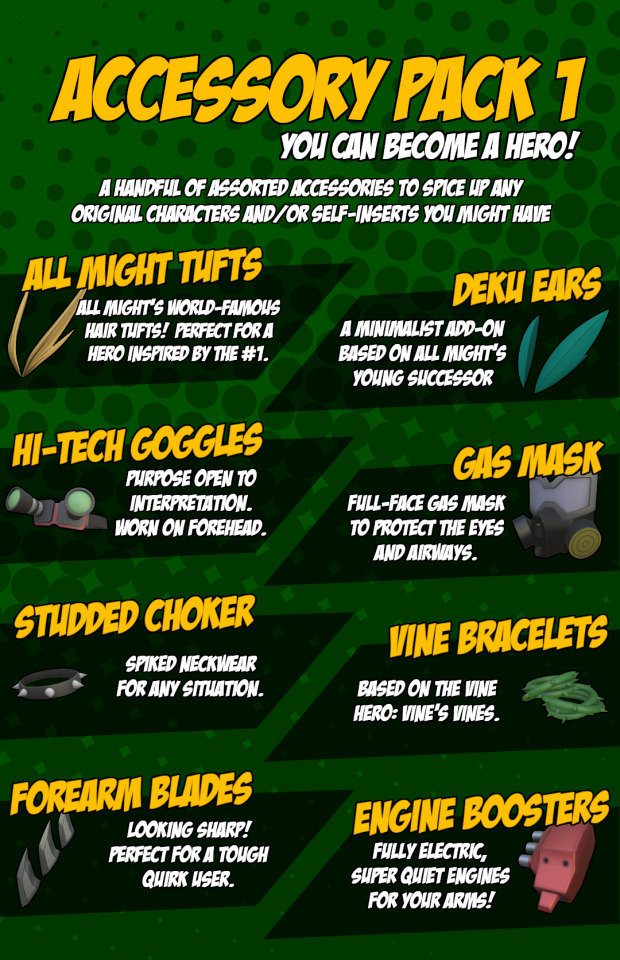
These items are all pretty much straight ports from the Unreal games, with slight adjustments to make them work better within Sims 4. They should be perfect additions to accessorize the characters in your world!
In addition to all this, I've been looking more and more into custom model creation workflows to expand my current knowledge base and make bigger and better projects in the future! Next up: a few characters I teased a while back, as well as a few alternative designs for your own personal use.
CAS Guide:
Hats: All Might Hair Tufts, Deku Ears, Hi-Tech Goggles
Glasses: Gas Mask
Necklaces: Studded Choker
Bracelets (Left/Right): Vine Bracelets, Forearm Blades, Engine Boosters
Download: S4S
And as always, let me know if you encounter any issues!
97 notes
·
View notes
Text
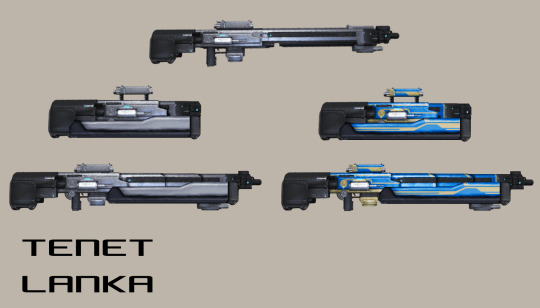
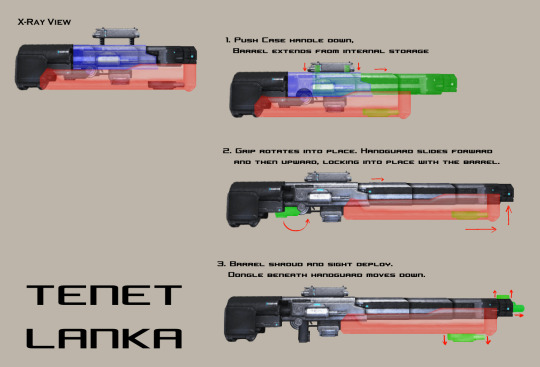
Designed a Tenet / Parvosian style Lanka for myself because it has been my favorite weapon in Warframe since I first built it in game back in 2015.
Spent some time in Clip Studio Paint editing the original png of the Lanka to add on elements such as the extending handguard so it could fit into the briefcase transformations like the Tenet Envoy, Diplos, or Grigori.
Had a lot of fun designing this. Meant to only spend 1 or 2 hours working on it but I was enjoying the workflow of it enough that I spent nearly 6 hours on it altogether.
Including my original notebook sketch for convenience's sake. (Plus I just like to share bits from the sketching stage of my art).

25 notes
·
View notes
Text
The Past 💛 Atlas

I’ve finally reached a point where I can sit down and do some work on Ash’s game on my own. It took a lot longer than I thought it would. Not only because his workflow is incredibly chaotic, but also his design is incredibly complex, far more complex than anything we work on at Rainy Day, but it’s fun to feel challenged again.

I’ve spent every night this week in Ash’s living room while he walks me through everything he has so far, sorting out the design and the mechanics, his ideas for the worlds, characters, storylines, objectives, and so on. Yet, it feels like we’ve only scratched the surface.
We work well together, but we’re also easily distracted, often going off on random tangents and talking about everything from our families to school years and childhood friends to experiences we’ve had or want to have; we talk about how fun it would be to have our own indie gaming company one day, if only we could focus on the actual game for longer than an hour at a time.
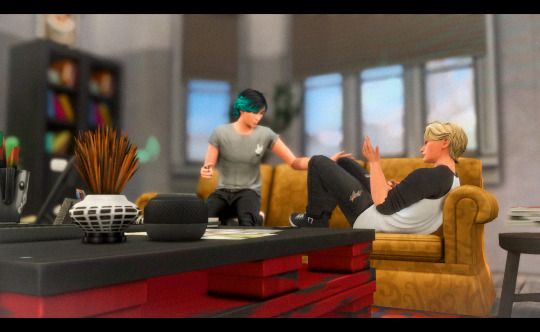
Last night a song came on that inspired a whole conversation about music and all the songs we used to sing the wrong lyrics to, and some he still sings wrong just to annoy Lex. We started playing a game where we’d give each other a random word or category and the other would have to play a song they liked that fit. At one point I asked him what his guilty pleasure song is.
“Oh, I have dozens of those,” he said, “uh, but the first one that comes to mind is The Boys of Summer.”
“Your guilty pleasure song is an 80’s song?” I was shocked considering the amount of shit he gives me for the majority of my playlist.
“No no no no,” he shook his head, “I should clarify. The original sucks.”
“Of course you think so.”
“Obviously. Okay, but the one I’m talking about is the cover of The Boys of Summer by The Ataris.
“I like the name, but I have no idea who that is,” I admitted.
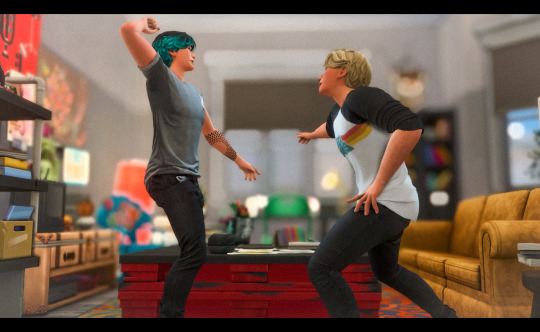

He laughed as he pulled up the song and told me, “You’re either going to love this or hate it. I’m not sure which.” When he pressed play, all I could do was watch in awe as he shamelessly enjoyed the song, complete with hand motions, air guitar and lip syncing. At one point he leaned in and sang directly to me, “But I don’t understand what happened to our love. But baby when I get you back, I’m gonna show you what I’m made of!” And then he spun away and started dancing to the chorus.
Before I had a chance to think too hard about whether he was trying to tell me something through the lyrics, he pulled me off the couch to join him. We sang and danced with everything we had until we collapsed onto the couch, out of breath and wiping tears from our eyes.

When we finally calmed down, he pointed at me, “Your turn. What’s your guilty pleasure song?”
“Oh god,” I covered my face, “I can’t believe I’m going to tell you this.”
“Tell me.” He demanded.
“Dancing With Myself by Generation X. I can’t hear it and not sing and dance around my apartment like an idiot.”
“Oh, I have got to see this!” He sat up excitedly to find the song and turn it on… and then cheered when I began clapping my hands to the beat… and then completely lost it and fell over laughing when I sang along with my eerily accurate Billy Idol impersonation.
It’s become one of my favorite things, making him laugh. He has about a dozen different laughs from a rush of air through his teeth, to an infectious giggle, to a loud belly laugh… but my favorite is when he’s laughing so hard that no sound comes out aside from a series of clicks until he finally catches his breath.
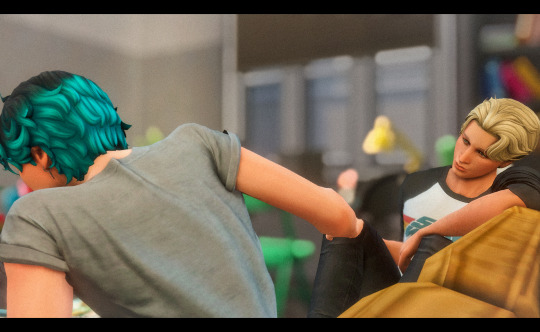
It’s so easy with him, to get out of my head, to just relax and be myself.
Not everything is easy, though. I keep telling myself that eventually my feelings will fade, that it will get easier to just be his friend and nothing more, but if anything, it’s getting more difficult. Sometimes when we’re together, all I can think about is sliding my hand over to rest it on his leg, or to pick up his hand and interlace our fingers, or to reach up and hold his face, turning it toward me so I can kiss him. Not a day goes by that I don’t think about kissing him, his lips, his neck, that inch skin above his waistband that sometimes shows when his shirt rides up just enough, every part of him. Sometimes I let my eye contact linger just a little, desperate for him to give me a sign that he still feels the same way, but he never does. On some level, I’m grateful. It’s better this way. I’d only end up hurting him again.

I hear the front door open and close, bringing me out of my daydream and back to my computer screen. I look over what I’ve done so far to make sure I didn’t screw anything up while I drifted away.

A second later, I hear Dawn enter the room and flop onto my bed behind me and I glance at the clock, it’s only two.
“What are you doing here?” I ask.
“Finished early. What are you doing? I thought you weren’t working on Fridays anymore.”
“I’m not. It’s just a side project I’m working on with Ash.”
“Ooooh I see.”
I roll my eyes and change the subject before she can inquire further. “So, why are you on my bed? What do you want?” As I say the words, I’m overcome by the feeling that we’ve done this before.
“For you to take a break and go do something with me." I'm antsy. "I’m antsy.” Her words come out like an echo from my own mind and my whole body feels fuzzy for a moment.
“Have we had this conversation before?”
“No. I don’t think so.”
“Hm. I’m having the weirdest déjà vu.”

“Maybe you’ve been staring at that screen too long. We should get out and do something.”
“What do you have in mind?”
I’m open to suggestions. “I’m open to suggestions.”
Weird. This conversation, the song playing through my speaker, Dawn laying on my bed, me at my computer… everything feels so familiar. “Where’s your boyfriend? Why aren’t you dragging him out?” Even as I ask the question, I know I’ve asked it before.
“He’s busy…” Having coffee with his ex-girlfriend. “Having coffee with his ex-girlfriend.”
Okay, I clearly need some fresh air, and she clearly needs my support right now, so I save my work, lock my computer, and spin around to face her. “Oh, that’s why you’re antsy. Okay, I can take a break, but let’s go outside. We can go for a jog, that’ll get your energy out.”
“Fine, I’ll go change.”

Prev // Deja vu // Next
#this one makes me want to play that game#you know where you have to try to spot all the differences#i should've counted them before posting this lol#but n e way#fun to finally be getting to this point in time#ts4#ts4 simblr#ts4 story#sims 4#sims 4 storytelling#sims 4 challenge#starsignchallenge#starsignlegacychallenge#gen1 aries#aries pt4#past#atlas stephens#asher goode#dawn stephens
66 notes
·
View notes
Text
DS9: "Our Man Bashir"

Doctor Bashir shows Garak around his new holosuite program, based on the secret agent movies of the 1960s. Suddenly a transporter accident causes five of Deep Space Nine's senior staff to be transplanted into the program as characters.
This is a cute story, but at this point Star Trek's penchant for holodeck stories has gotten dangerously close to the dream sequences in Gilligan's Island. So let's talk about the holodeck (this one show always calls it "the holosuite," but you know what I mean).
James Bond references aside, the basic idea here is that Bashir and Garak are playing a video game, but real people are trapped in the game's code. The upshot is that they has to keep playing the game, which would be pretty low-stakes for a Star Trek episode. So there's a lot of exposition to establish an additional contrivance: if you die in the game you die for real! This doesn't make any sense, except to inject actual danger into what is otherwise an imaginary story. Once you notice this, you start to realize it would be much more straightforward to simply let our heroes go outside and touch space.
Naturally the holodeck safety protocols are the first thing to stop working when there's a malfunction, sort of like a Cybertruck that only lets you open the doors when it's not on fire. So when Bashir and Garak are trapped in a cavern that's about to fill with lava, Garak is concerned the lava will really kill them. The implication is that the safeties are the only thing preventing the holodeck from immersing people in simulated lava that is just as hot as the real thing. In other words, you have a room on your space station that can generate enough heat to melt through the bulkheads, except it's not supposed to do that, except it's totally designed to do that when the safeties are off. What was the use case for this workflow, exactly?
23 notes
·
View notes
Text

Thank you so much for supporting us as we create ExtraColonist! We are now officially the largest IWATEX mod and just hit 400 members on our Discord so there is an exciting reveal attached... Helios silhouettes!
Our patreons voted on what to reveal, and they wanted to see a teaser for our future crash-landed characters. Do note that there will be 5 main Helios, but only 4 are complete- that's how early you guys got us here! What do you think their augments and personalities are?
and don't worry, progress will be moving smoothly and faster than our first year from now on! We have a clear workflow and thorough mod loader created during this first year.
So let's see what we've been working on since we founded...
April 2024 to March 2025
Art
39 cutscenes
13 backgrounds
78 cards made
50 full character sprites made (multiple expressions each)
18 map sprites drawn and animated
125 emotes
9 character redesigns
4 characters discarded
7 sol accessories
19 celestial tier artworks
72 cards coded in
3 music tracks made
78 memes (internal)
Main menu extended background and logo change
Designed website and reveals template
2 trailers
Writing
Writing fully complete for the first 3 game years
Lore expansions
Full character outlines and documentations
All heart events outlined
New endings conceptualized
Alterations to existing events
Year 1 artbook
Coding
Custom gear capability
Pronouns can change with life stage
Childhood friend mechanic
Full compatibility with other mods
Death capability
Custom music capability for specified events and seasons
Characters can spawn in expeditions
Custom collectables
Custom pets
Pet aging mechanic
Custom map spots per season
Main menu revamp- scrolling capability and new images
Animated map sprites
Lowered memory usage
Load recources at start of game + custom loading scene
Expanded upon dating capability
Custom endings and backgrounds capability and in gallery
Custom credits
Character can optionally age past 20 capability
Disable mods without uninstall (patreon request)
Indicate which mods are active on savefiles
Most remaining exoloader removed and replaced
Complete codebase refactor error reporting and better performance
Custom locations
All vanilla characters, cards, locations, collectables, and jobs overwritten
Collectables scroll bar implimented
Seasonal background changes
Non-windows capability
Sol sprite editing
Random number within range exoscript extension
63 cards coded in
All year 10 characters coded in
Year 10 fully coded with 11 started
BUGS FIXED
Overridden characters stop becoming a woman
Fixed week not being found in saves
Fix for spaghetti characters on slower PC
Fixed animation speed on slower PC
Prevent invalid songs from breaking code
Fixed anne not showing up
Fixed some invalid peri choices & sprites
Fixed wrong use of quotations being used in dialogue
Other
Seraphic LLC registered
400 Discord members
510 unique mod downloads
36 nexus endorsements
18 notes
·
View notes
Text
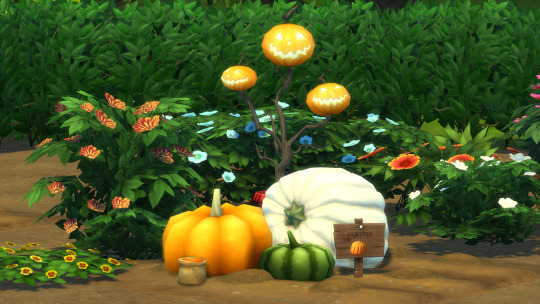
🌿 Sneak Peek: Greenhouse Haven Reloaded CC Pack – Part I | BGC Sims 4 Custom Content 🍃
If you're looking for quality Sims 4 greenhouse CC, you're in the right place! After 5 intense days of full-immersion work, I'm so excited to finally share a preview of Part I of my very first custom content collection for The Sims 4: Greenhouse Haven. 🏡🪴
This project is a big milestone for me — it’s not only my first official release but also the result of countless hours spent learning and improving my skills. While this collection doesn’t feature fully original creations, I’ve poured my heart into extracting, optimizing, and reworking existing assets to create something special and unique for the community.
For the first time ever, I opened Blender, and over the past 5 days I’ve been working non-stop reworking models, retexturing, and optimizing meshes. This includes:
🛠️ Reworking and Extracting Assets: Extracting and reworking objects from Base Game, Seasons, and the Greenhouse Haven Kit for added depth and detail.
🧠 Mastering Conversion: Learning to convert EA decorative meshes into fully functional Sims 4 custom content.
🔨 Mesh Optimization: Using Blender to separate and optimize meshes, improving geometry and overall quality.
🌟 Detail Refinement: Rebuilding shadows, creating object slots, tuning behaviors, and reworking textures to ensure everything feels polished and functional in-game.
📚 Self-Taught Journey: Digging through tutorials and the S4S forum to perfect the entire CC workflow.
🎨 Fine-Tuning: Reworking specular and normal maps, tweaking object slots, and making those small adjustments that bring CC to perfection
✨ What’s in Part I?
The centerpiece of Part I is a functional flower arranging table — just like the one from Seasons, but remade with love and options!
You’ll get three versions:
🌿 Decluttered – clean and minimal for flexible builds
🌼 Semi-decluttered – slightly styled for realism
🌺 Full cluttered – detailed like the original, rich in atmosphere
And the best part? The table includes over 100 object slots, so you can decorate it endlessly — perfect for detailed storytelling and immersive gameplay.
But that’s not all...
You’ll also get a set of converted and enhanced build/buy objects, drawn from the Greenhouse Haven Kit and Base Game, including:
🖌️ All original Maxis swatches + custom recolors
🧱 Mesh edits
🍅 Bonus Content for Garden Builders:
This pack also includes 67 BGC custom plant markers covering all harvestables from:
🌱 Base Game
☀️ Seasons
🏘️ Eco Lifestyle
🐾 Cats & Dogs
🏞️ Get Together
🐓 Cottage Living
Perfect for organizing greenhouses, backyard farms, and market lots with clarity and charm!
All objects are Maxis Match, gameplay-tested, and designed to blend seamlessly into rustic, cottagecore, or traditional European builds. Cozy, detailed, and game-ready — just how I love it.
Stay tuned for the official release of Part I — this is only the beginning of a 4-part journey 🌸 Thank you so much for being here 💛
— Simgard
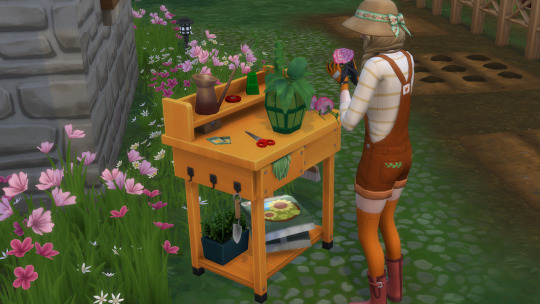
#sims 4#sims 4 cc#ts4#ts4 cc#sims 4 custom content#ts4 custom content#sims 4 build buy#sims 4 gardening cc#sims 4 flower arranging#sims 4 clutter#ts4 clutter#sims 4 greenhouse#greenhouse haven#sims 4 cc furniture#sims 4 cottagecore#sims 4 maxis match#ts4 maxis match#sims 4 cc download#ts4 cc download#ts4 cc pack#sims 4 cc collection#sims 4 reworked objects#sims 4 cc decor#sims 4 garden table#sims 4 functional cc#sims 4 slots cc#sims 4 harvestables#sims 4 plant markers#simgard cc#simgard
17 notes
·
View notes